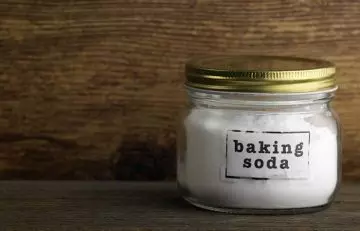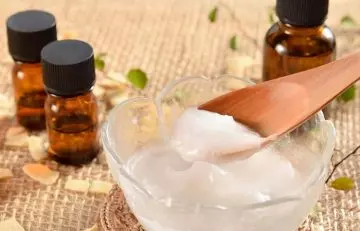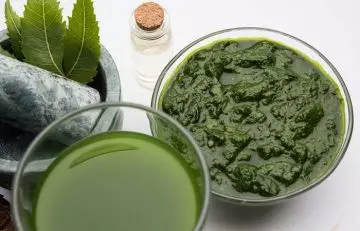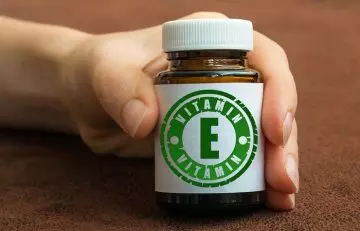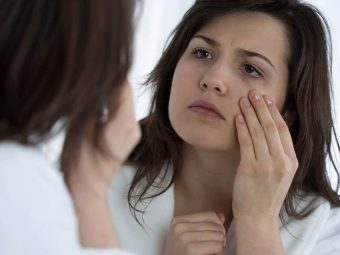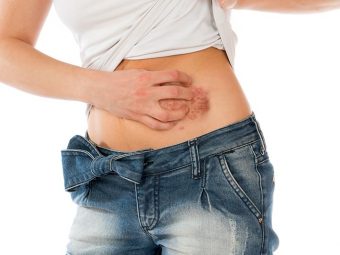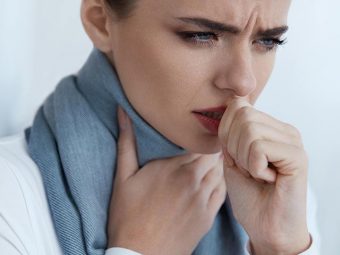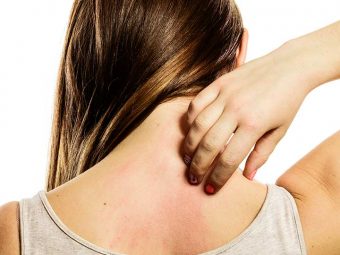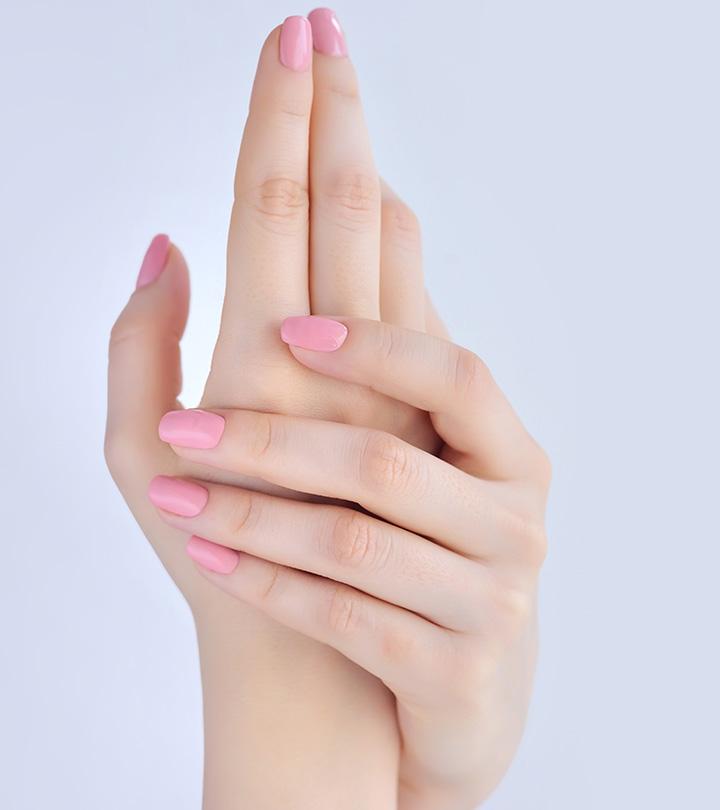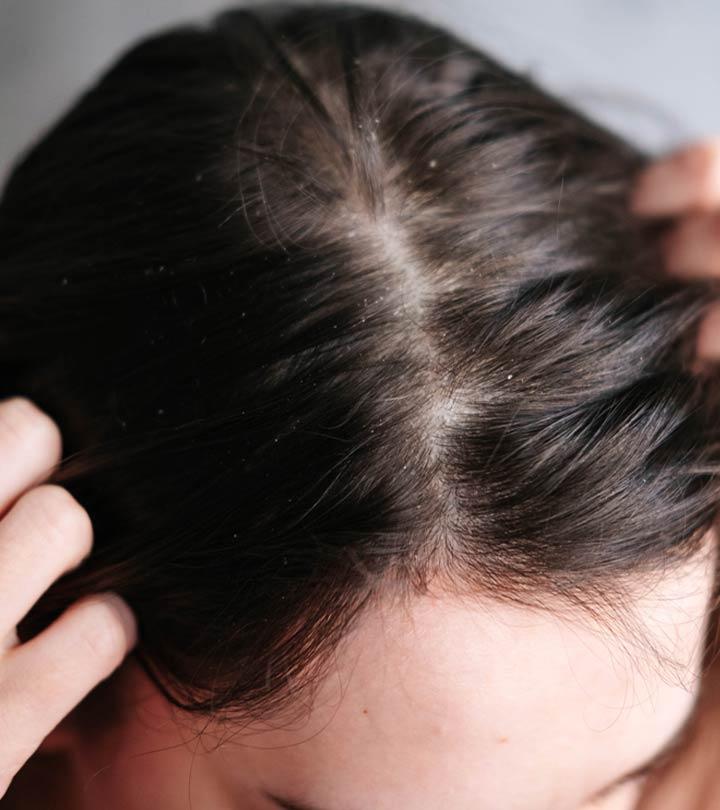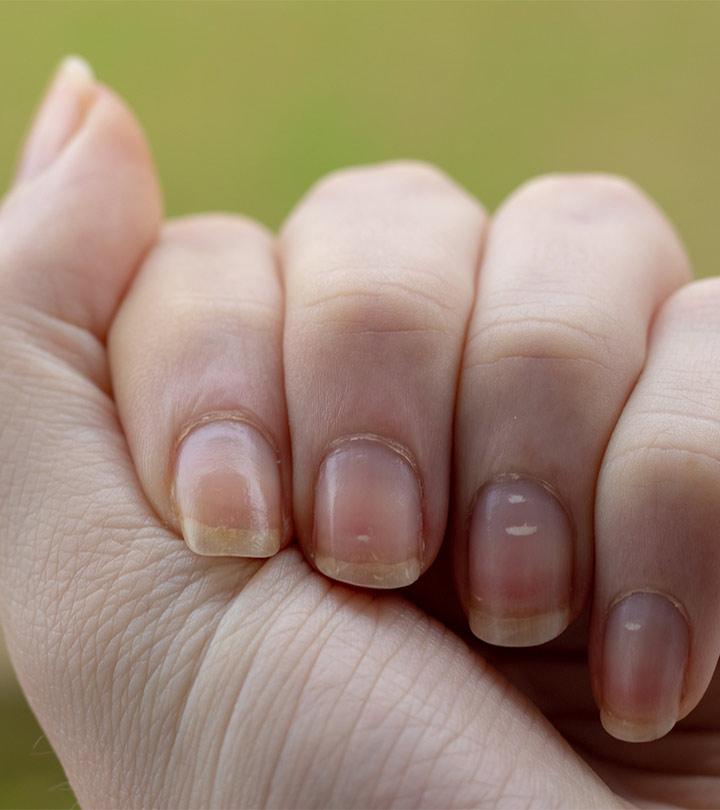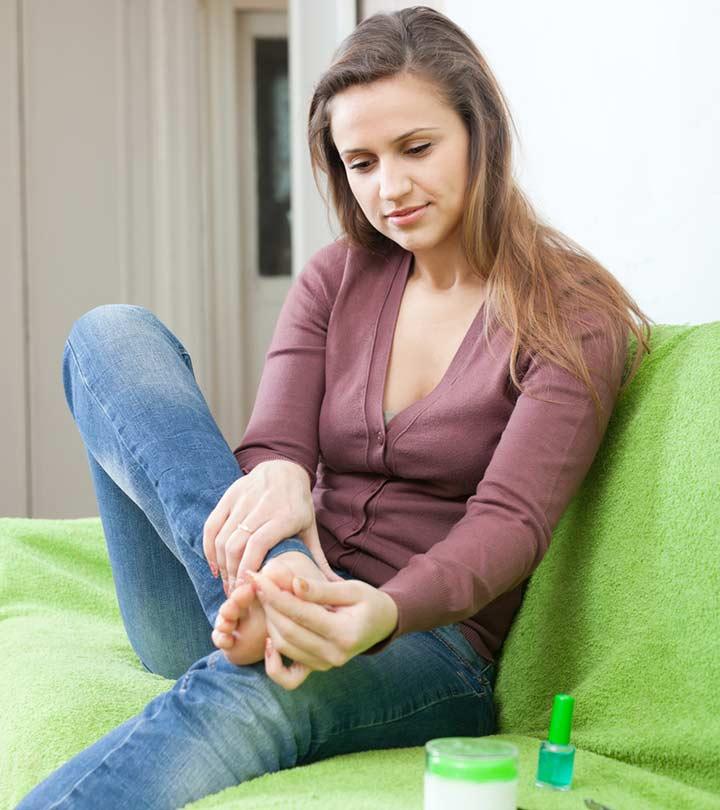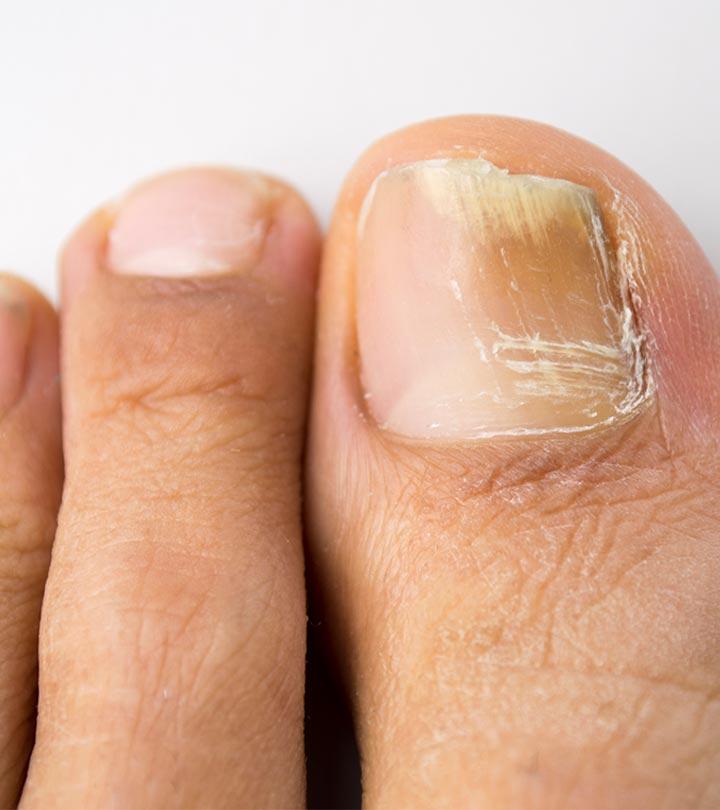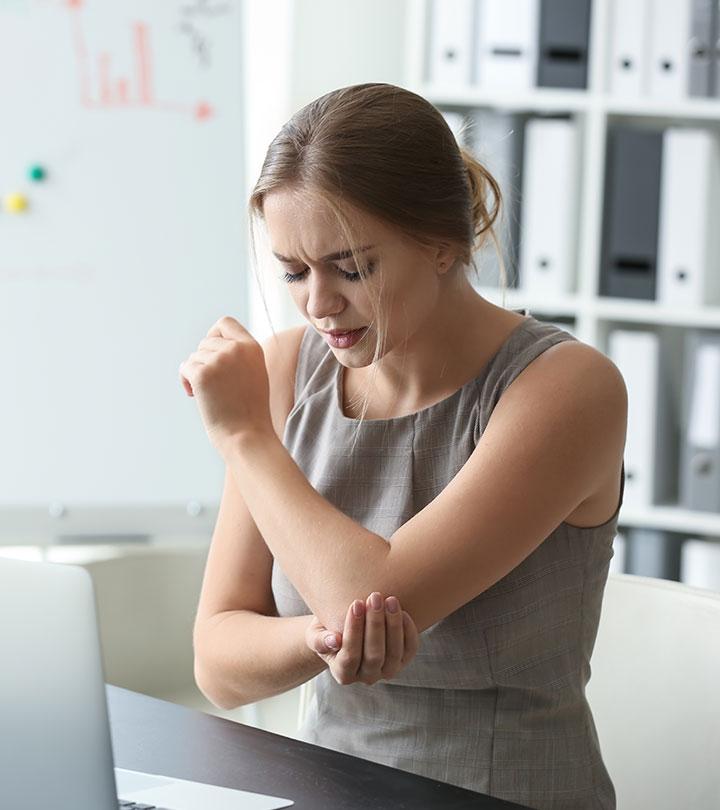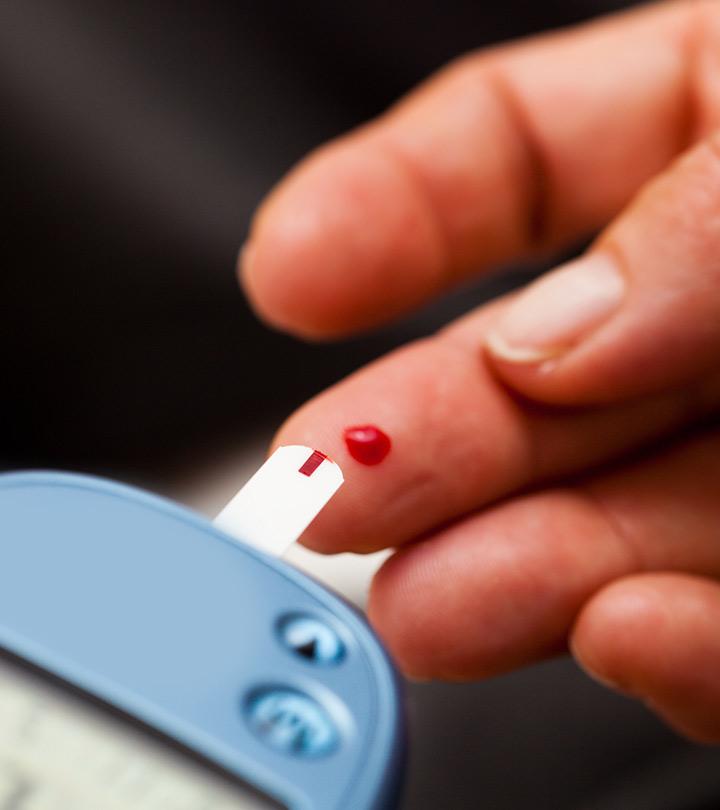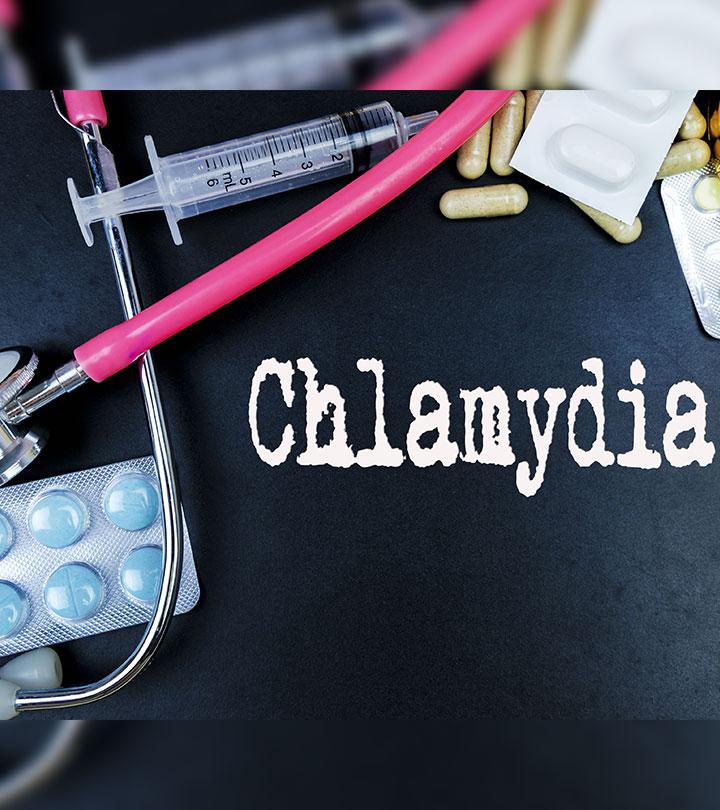Top 16 Effective Home Remedies To Get Rid Of Chickenpox
Soothe those itchy bumps with the help of oatmeal or baking soda among other remedies.

Image: shutterstock
Chickenpox is an extremely contagious disease that spreads through droplets in the air. Its symptoms include fluid-filled round rashes that can cause severe itchiness and a fever that doesn’t seem to go away. Thus, it would be best to get rid of chickenpox before you go back to your daily life, as it can spread quickly among those who have never had it before and come in contact with you. It is usually a childhood disease but individuals who have not had chickenpox in their childhood might get infected with it in their adulthood. Besides, chickenpox can leave you feeble as its symptoms are very unpleasant and painful.
However, natural home treatments can help relieve this viral infection’s symptoms. Continue reading to learn more about this ailment and what you can do to speed up your recovery. Scroll down!
In This Article
What Is Chickenpox And What Causes It?
Chickenpox is a viral infection caused by the varicella-zoster virus (VZV). It is also sometimes referred to as varicella (1).
A report by the Australian Institute of Health and Welfare estimated that 395 hospital admissions for chickenpox took place in 2016. Out of 395 hospital admissions, 26% (101) were children under the age of 15 years. It was also noted that 93% of 2-year old Australian babies were fully vaccinated against chickenpox.
Signs And Symptoms Of Chickenpox
- Fluid-filled vesicles that are pink or red
- Blister-like rashes
- Itching
- Fever
- Tiredness and fatigue
- Headache
- Loss of appetite (2, 3)
How Does Chickenpox Spread?
The chickenpox virus can spread very easily by breathing in the same air as an infected patient or close contact with blisters. An infected person can transmit the disease from 1-2 days before they get rashes until they have healed completely. This contagious period lasts for a few weeks. Even people who took the chickenpox vaccine and still contracted the disease can spread it to others around them (4).
Apart from being highly contagious, this viral infection can create a lot of discomfort. Though there are antiviral medications licensed for the treatment of chickenpox, the remedies given below also provide relief from the symptoms and help recuperate from this infection.
Here are the remedies.
How To Get Rid Of Chickenpox
- Aloe Vera
- Baking Soda Bath
- Oatmeal Bath
- Vinegar Bath
- Salt Bath
- Calamine Lotion
- Essential Oils
- Neem Juice
- Lime Juice
- Boiled Guava Leaves
- Herbal Teas
- Vitamin E Oil
- Marigold Flowers, Witch Hazel Leaves, And Water
- Honey
- Ginger
- Green Peas
16 Best Home Remedies For Chickenpox
1. Aloe Vera For Chickenpox
You Will Need
An aloe vera leaf
What You Have To Do
- Slice the leaf sideways and scoop out the gel present inside. Transfer it to an airtight container.
- Apply this fresh gel on the rashes.
- Leave it on.
Store the rest of the gel in the refrigerator. This is safe to use for up to seven days.
How Often You Should Do This
Reapply 2-3 times a day.
Why This Works
Aloe vera gel soothes and cools inflamed and itchy skin during chickenpox. It moisturizes the skin, has anti-inflammatory properties, and helps reduce the itching (2). This remedy is safe to use for chickenpox in infants as well.
2. Baking Soda Bath For Chickenpox
You Will Need
- 1 cup baking soda
- A bathtub with warm water
What You Have To Do
Add baking soda to the water in the bathtub and soak in it for 10-12 minutes.
How Often You Should Do This
Do this every day.
Why This Works
Baking soda soothes the itchy and inflamed rashes on your skin. It is also antimicrobial in nature and aids faster recovery from the infection (3). Alternatively, you can also add an antiseptic liquid like Dettol or Savlon to the bath and soak in it for a couple of minutes.
3. Oatmeal Bath For Chickenpox
You Will Need
- 2 cups oats
- 4 cups water
- A cloth bag
- Warm water
- A bathtub
What You Have To Do
- Grind the oatmeal and soak it in four cups of water for a few minutes.
- Now, put this mixture in a cloth bag and secure it tightly.
- Place it in the warm water bath and soak in it for a couple of minutes.
How Often You Should Do This
Do this once every day.
Why This Works
Soak in the goodness of an oatmeal bath – a tried and tested remedy that just can’t go wrong. Oatmeal helps to soothe and cleanse the infected skin. It relieves the itching by acting as a moisturizing agent. The inflammation of the rashes will reduce to a great extent with this remedy (4).
4. Vinegar Bath For Chickenpox
You Will Need
- 1 cup brown vinegar OR apple cider vinegar
- A bathtub
- Warm water
What You Have To Do
- Add the vinegar of your choice to the bath water and soak your body in this for about 15 minutes.
- Rinse with plain water.
If you find vinegar too pungent, add a drop or two of an essential oil, such as tea tree oil or lavender oil, to the last mug of water and rinse. Tea tree oil and lavender oil also induce sleep.
How Often You Should Do This
You can do this every alternate day.
Why This Works
Both brown vinegar and apple cider vinegar give instant relief from itching, reduce the scarring, and heal the marks or lesions that you are bound to develop. Vinegar also has antimicrobial properties (5).
5. Salt Bath For Chickenpox
You Will Need
- 1/2 cup sea salt OR Dead Sea salt
- 1 teaspoon lavender oil (optional)
- Warm water
- A bathtub
What You Have To Do
- Once your bath is ready, add the sea salt and lavender oil to it. Mix well.
- Soak your body in it for 10-15 minutes.
How Often You Should Do This
Do this once every day.
Why This Works
The antimicrobial properties of sea salt fight the germs and its anti-inflammatory properties relieve itching (6).
6. Calamine Lotion For Chickenpox
You Will Need
- 5 drops lavender oil
- A cup of calamine lotion
What You Have To Do
- Mix the essential oil with the lotion in a bottle. Shake well.
- Apply this lotion on the chickenpox rashes.
How Often You Should Do This
Reapply 2-3 times a day.
Why This Works
This pinkish liquid is sure to be on your doctor’s prescription if you are diagnosed with chickenpox. Calamine lotion gives relief from severe itching and also soothes the inflamed skin (7, 8).
7. Essential Oils For Chickenpox
You Will Need
- 1/2 cup coconut oil
- 1 teaspoon lavender oil OR eucalyptus oil OR tea tree oil OR sandalwood oil
What You Have To Do
- Mix the essential oil and carrier oil.
- Apply the blend on the chickenpox rashes and blisters.
- Leave it on for as long as possible.
A combination of essential oils, such as lavender oil with tea tree oil (in coconut oil), can also be used to soothe the rashes.
How Often You Should Do This
Apply this oil blend 2-3 times in a day.
Why This Works
This oil blend soothes the chickenpox scars and rashes and relieves itching. Coconut oil nourishes and hydrates the skin and relieves itching (9). Lavender oil relaxes and soothes the inflamed skin. It also works as an antimicrobial agent (10). Eucalyptus oil and tea tree oil possess antimicrobial and healing properties (11, 12). Sandalwood oil cools down the skin and reduces the fever with its antipyretici XA substance that causes the hypothalamus to lower the body temperature, resulting in a reduction of fever. properties (13).
8. Neem Juice For Chickenpox
You Will Need
- A handful of neem leaves
- Water
What You Have To Do
- Grind the leaves to get a paste.
- Apply this paste on the rashes and leave it on for a few hours.
You can also draw a neem bath for chickenpox by adding some neem leaves to your bath water and rinsing your body with it (or soaking in it).
How Often You Should Do This
Do this twice a day.
Why This Works
The neem tree, or Indian Lilac, is loaded with antiviral and antibacterial properties. It gives instant itch relief. This potent ointment also dries the blisters, thereby accelerating the healing process (14).
9. Lime Juice On Chickenpox
You Will Need
- 2 tablespoons lime or lemon juice
- 1 cup water
- Cotton
What You Have To Do
- Dilute the lime juice and apply it on the rashes using the cotton.
- Leave it on for a few minutes and then clean the area with a wet washcloth.
How Often You Should Do This
Do this twice a day.
Why This Works
Lime juice acts as an astringent. It contains vitamin C and antioxidants that speed up the healing process of the chickenpox scars and rashes (15).
Caution
This remedy may sting slightly. If you find it unbearable, clean the area immediately with plain water.
10. Boiled Guava Leaves For Chickenpox
You Will Need
- 10-12 fresh guava leaves
- 2 cups water
- Honey (to taste)
What You Have To Do
- Boil the guava leaves for 10-15 minutes.
- Strain the liquid and add honey to taste.
- Drink this herbal tea while it is warm.
How Often You Should Do This
Have 2-3 cups of boiled guava leaves tea in a day.
Why This Works
Guava leaves are often used in Chinese and Ayurvedic medicine for skin infections and irritation. They are rich in vitamin C and also have antimicrobial properties. They lessen the chickenpox rashes and also prevent scarring because of their vitamin C content (15).
Caution
If you suffer from hypoglycemiai XA condition where blood sugar drops below the standard range and may cause confusion, heart palpitations, or anxiety. , do not drink guava leaf tea as it lowers blood sugar. People with heart conditions should also refrain from using this remedy for chickenpox.
11. Herbal Teas
You Will Need
- 1 herbal tea bag (catnip OR chamomile OR basil OR lemon balm OR licorice)
- A cup of hot water
- Honey
What You Have To Do
- Steep the tea bag or dried herb in hot water for a few minutes.
- Strain the decoction and add honey.
- Drink this tea.
You can add some cinnamon powder and/or lemon juice as well for flavor.
How Often You Should Do This
Have 2-3 cups of your preferred herbal tea (from the options given above) in a day.
Why This Works
Herbal teas like chamomile, basil, and lemon balm have a multitude of medicinal properties. They regulate the gastrointestinal system and boost immunity. Their anti-inflammatory compounds and antioxidants aid quick recovery from chickenpox (16, 17).
12. Vitamin E Oil
You Will Need
Vitamin E capsules
What You Have To Do
- Prick a couple of capsules and pour out the oil present inside.
- Apply this oil on the chickenpox rashes and scars. Leave it on.
How Often You Should Do This
Apply vitamin E oil 2-3 times in a day.
Why This Works
Vitamin E oil hydrates the skin and removes the dead and darkened skin cells from the surface. It also exerts an anti-inflammatory effect on the infected skin and heals the rashes with its antioxidants (18, 19, 20). If used in the early stages of chickenpox, this oil will help avoid scar formation.
13. Marigold Flowers, Witch Hazel Leaves, And Water
You Will Need
- 2 tablespoons marigold flowers
- 5-6 witch hazel leaves
- A cup of water
What You Have To Do
- Soak the marigold flowers and witch hazel leaves in water overnight.
- Grind this to a paste in the morning and apply it on the rashes.
- Keep it on for an hour or so, and then gently wash it off.
How Often You Should Do This
Do this twice daily.
Why This Works
Marigold flower has skin moisturizing properties (21). Along with the antiseptic properties of witch hazel, this remedy kills the infection causing virus and soothes the itchy skin (22).
14. Honey
You Will Need
Honey
What You Have To Do
- Apply honey on the affected area.
- Leave it on for at least 20 minutes.
- Rinse it off with water or wipe it away gently with a wet tissue or cloth.
How Often You Should Do This
Apply honey twice a day on the rashes.
Why This Works
Honey is a natural humectant and the best remedy for those itchy sores and lesions. It will not only reduce the urge to scratch but also help to reduce scarring (23).
15. Ginger
You Will Need
2-3 tablespoons ginger powder
What You Have To Do
Add this to your bath water and soak in it for 20 minutes.
How Often You Should Do This
Repeat every day for best results.
Why This Works
Ginger has anti-inflammatory and antimicrobial properties. The chickenpox scabs and rashes will start healing, and the itching will greatly reduce with this remedy (24).
16. Green Peas
You Will Need
- 200 g green peas
- Water
What You Have To Do
- Boil the peas and crush/grind them into a paste.
- Apply this paste generously on the rashes.
- Leave it on for an hour or so.
- Take a bath with lukewarm water.
How Often You Should Do This
Do this once every day.
Why This Works
Ayurveda, the renowned form of Indian medicine that is becoming global, lists the use of green peas for application on blisters and lesions for quick healing. They contain vitamin B6, vitamin C, and folic acid. They fight inflammation, reduce the itching, and soothe the irritated skin (25),(26),(27).
While the disease will take its due time to heal, these home treatments can be incorporated to soothe the skin, fight the urge to scratch, and reduce the chances of severe scarring.
In addition to the above remedies, certain medications also may help ease chickenpox symptoms. Learn more about them in the next section.
Medicine For Chickenpox Treatment
- Antipyretics (Fever Reducers)
Over-the-counter medicines such as paracetamol may help reduce fever, pain, and discomfort caused by chickenpox.
- Antihistamines
Your doctor may prescribe a sedative antihistamine to reduce itching and help sleep better at night (28). However, in a study, excess topical application of an antihistamine called diphenhydramine led to bizarre behavior and hallucinations (29). Hence, practice caution when using antihistamines. Never self-prescribe.
Yash Panwar, a blogger, recalled his experience with chickenpox and warned against taking medication without a prescription. He wrote, “I had a fever. I didn’t notice any blisters then, so I thought it was a normal fever and took 3 paracetamols, in total, in 3–4 days. This must have worsened my symptoms somewhere (i).”
Always follow your doctor’s recommendations when taking these medications. Avoid exceeding the recommended dose to prevent adverse effects.
During the infection and after, it is important to maintain a healthy diet. This will help the body to build immunity against chickenpox and fight the infection better and quicker. We have listed the diet recommendations for chickenpox below.
Diet For Chickenpox
A well-balanced diet with plenty of fluids can make a huge difference in your recovery. Stick to basics and eat fruits and vegetables in their natural form as they are loaded with antioxidants, disease-fighting vitamins, minerals, and other chemicals that help to make the immune system stronger and fight the infection. Here are the food items you should eat and avoid.
What Foods To Eat When You Have Chickenpox?
- Carrot and coriander soup
- Fish (but not shellfish) as it has anti-inflammatory omega-3 fatty acids
- Yogurt as it contains probiotics that boost the immune system
- Mangoes, apricots, papaya, cherries, fig, pineapples, apples, and pears
- Vitamin C-rich veggies like kale, broccoli, peppers, watercress, and spinach
- Grass-fed beef and lamb, chicken, and turkey
- Shiitake mushrooms
What Foods To Avoid For Chickenpox?
- Nuts
- Whole grains such as wheat, oats, and rice as they contain more arginine (Arginine helps varicella virus growth)
- Grapes, blackberries, blueberries, oranges, and grapefruit
- Chocolate
- Caffeinated drinks
- Salty foods as they can cause dehydration
- Spicy food and food high in fats
Make simple changes in your diet by following these recommendations advised by doctors and specialists. Let us now look at the people who have an increased risk of contracting the infection.
Risk Factors For Chickenpox
You are at a higher risk of contracting chickenpox if:
- You haven’t had chickenpox before.
- You have not been vaccinated for chickenpox.
- You spend a lot of time in and around a school or an area frequently visited by children.
- You live with children.
- You have a weakened immune system due to an immune disorder or medications such as chemotherapy.
Complications can easily arise in newborns or infants, pregnant women, and people with a compromised immune system when they acquire this infection. Also, you can contract the virus even if you have been vaccinated. In such cases, the symptoms are usually mild to none.
 Trivia
TriviaPrevention is the best option when it comes to chickenpox. Let’s see how you can avoid contracting this infectious disease.
Prevention Tips For Chickenpox
The best prevention tip for chickenpox is to get the vaccine. It is safe and effective, and is recommended for all children and adults. The vaccine is given in two doses and protects you from the infection.
 Trivia
TriviaHere are some questions about chickenpox answered for you by experts.
The phrase ‘Prevention is better than cure’ makes complete sense when it comes to chickenpox. If you have never had the infection and/or the vaccine, consult your doctor immediately to schedule the vaccination.
Infographic: Top Natural Remedies To Treat Chickenpox
Chickenpox usually resolves in a few weeks. However, the symptoms can be extremely irritating while the condition is active. The primary symptom of chickenpox is a rash with red lesions that develop all over the body. The itchy, unpleasant, and often painful rash gets worse when scratched. But the good news is that numerous at-home remedies can help ease these and deter people from picking at the blisters. Check out the infographic below for some of these helpful home remedies. Illustration: StyleCraze Design Team
Chickenpox is a highly contagious condition requiring immediate medical attention. A well-balanced diet and plenty of fluids can aid in chickenpox recovery. The home remedies listed in this article can soothe the blisters on the skin, relieve itching and irritation, reduce the urge to scratch, and risk of severe scarring.
However, these remedies provide only primary relief during the recovery process, and you should always try them after consulting the doctor. Also, always do a patch test to prevent the risk of further irritation and allergic reactions.
Frequently Asked Questions
Is chickenpox dangerous?
Chickenpox can be dangerous if the child is too young or older than 12 years. Complications can also arise in pregnant women and people with a weakened immune system. Consult a healthcare provider immediately if you suspect a chickenpox infection in someone who falls into the above categories.
The complications that can arise include secondary infections, such as cellulitisi XA common skin infection that causes redness, inflammation, and swelling of the infected area due to bacteria. , pneumonia, or encephalitisi XInflammation of the tissues in the brain caused due to acute viral or bacterial infections or autoimmune responses. . Bleeding disorders have also been reported in rare cases.
Where does chickenpox start on the body?
The rashes usually start appearing on the face, chest, and back. Then, they spread to the rest of the body like the eyelids, mouth, and genital areas.
Can adults get chickenpox from a child?
Yes, especially if you have not had chickenpox before, or if you have not been vaccinated.
Why is chickenpox so itchy and how to get rid of the itch?
The viral infection causes red vesicles to form on the skin. These contain fluids made up of toxins produced by the virus that causes the itching sensation. You can use any any antiallergic prescribed by the doctor or try the home remedies given in this article to get rid of the itch.
Note: The affected people should stay at home to prevent spreading the disease to others. You can cut the nails short or wear gloves to prevent scratching and minimize the risk of secondary infections. Apply Lactocalamine lotion to prevent burning sensation.
Is smallpox the same as chickenpox?
No, it is not. Chickenpox is caused by the varicella virus, which belongs to the herpes virus family, whereas smallpox is caused by the variola virus. This is commonly known as the pox virus. Smallpox has been eradicated and an effective vaccine is available for chickenpox.
How many days does it take to get cured of chickenpox?
It takes about 5-10 days to cure chickenpox.
When is a child vaccinated for chickenpox?
It is recommended to administer the first dose of the vaccine to the child between 12 to 15 months of age. The second booster dose is given between 4 to 6 years of age. The side effects of the chickenpox vaccine include mild fever and rashes, nausea, vomiting, stuffy/runny nose, and swelling at the site of the shot.
Can you get chickenpox after being vaccinated?
Yes, it is possible. However, in such cases, the symptoms are either none or very mild, with very few rashes and blisters. Fever may or may not be present.
Can you get shingles if you did not have chickenpox?
Shingles is a variant of the varicella-zoster virus infection. This is usually seen many years after chickenpox. The virus survives in your body and later reactivates and causes short-lived blisters called shingles. Hence, you can get shingles only if you have had chickenpox except in a few immunocompromised patients (like HIV or diabetes) who can get shingles although vaccinated for chicken pox .
What is the difference between measles and chickenpox?
Measles is caused by the paramyxovirus, and chickenpox is caused by the varicella virus. Measles presents itself as red rashes all over the body, whereas chickenpox causes red blisters. Measles lasts longer than chickenpox and is responsible for causing many deaths around the world.
Can chickenpox vaccine delay your period?
No, the chickenpox vaccine is not connected to any fluctuation in your menstrual cycle.
Is chickenpox dangerous during pregnancy?
Unfortunately, the answer to this question is yes. If you contract chickenpox in the early stages of pregnancy, it can cause low birth weight and birth defects in the baby. In case the mother acquires the infection close to the delivery date, both before and after, serious complications can arise, and they can be life-threatening for the baby. If you are planning to get pregnant or are pregnant and have never had chickenpox or taken the vaccine for it, please speak to your doctor about this.
Can chickenpox cause birth defects?
Yes, chickenpox in pregnant women can cause birth defects like limb abnormalities.
Can you take the chickenpox vaccine while pregnant?
The chickenpox vaccine is not recommended during pregnancy.
Is it safe to be around a child with the chickenpox when I’m pregnant?
No! It is not safe for you and the baby to be around an infected individual.
Can you get chickenpox more than once in your life?
It is very rare to get chickenpox more than once in your life. If it does happen, it usually presents itself as shingles.
Key Takeaways
- Fluid-filled red blisters, itching, and fever are a few symptoms of chickenpox.
- Natural ingredients like oatmeal baths, cool compresses, honey, and aloe vera may help alleviate itching and scarring,
- Eating yogurt, fruits, and broccoli to help combat chickenpox.
- Avoid nuts, chocolates, and salty foods during chickenpox.
- Individuals with an immune disorder and children are at greater risk of contracting chickenpox.
Learn about Chicken Pox–its symptoms, causes, prevention, and treatment from this informative video. Get the best advice from experts and stay safe. Scroll down to watch the video.
Personal Experience: Source
StyleCraze's articles are interwoven with authentic personal narratives that provide depth and resonance to our content. Below are the sources of the personal accounts referenced in this article.
i. Chickenpox after 12 is awful! Dos & don’ts (from experience)https://medium.com/@yashpanwarhere/chickenpox-after-12-is-awful-dos-don-ts-from-experience-181c15394774
References
Articles on StyleCraze are backed by verified information from peer-reviewed and academic research papers, reputed organizations, research institutions, and medical associations to ensure accuracy and relevance. Read our editorial policy to learn more.
- Varicella-zoster virus (chickenpox)
https://www.ncbi.nlm.nih.gov/books/NBK448191/ - Aloe vera: a short review
https://www.ncbi.nlm.nih.gov/pmc/articles/PMC2763764/ - Antibacterial activity of baking soda
https://pubmed.ncbi.nlm.nih.gov/12017929/ - Colloidal oatmeal: history, chemistry and clinical properties
https://pubmed.ncbi.nlm.nih.gov/17373175/ - Vinegar: medicinal uses and antiglycemic effect
https://www.ncbi.nlm.nih.gov/pmc/articles/PMC1785201/ - Barrier-restoring therapies in atopic dermatitis: current approaches and future perspectives
https://www.ncbi.nlm.nih.gov/pmc/articles/PMC3432345/ - Calamine lotion to reduce skin irritation in children with cast immobilisation
https://pubmed.ncbi.nlm.nih.gov/24014789/ - Zinc Therapy in Dermatology: A Review
https://www.ncbi.nlm.nih.gov/pmc/articles/PMC4120804/ - A randomized double-blind controlled trial comparing extra virgin coconut oil with mineral oil as a moisturizer for mild to moderate xerosis
https://pubmed.ncbi.nlm.nih.gov/15724344/ - Biological activities of lavender essential oil
https://pubmed.ncbi.nlm.nih.gov/12112282/ - Immune-modifying and antimicrobial effects of Eucalyptus oil and simple inhalation devices
https://pubmed.ncbi.nlm.nih.gov/20359267/ - Melaleuca alternifolia (tea tree) oil: a review of antimicrobial and other medicinal properties
https://www.ncbi.nlm.nih.gov/pmc/articles/PMC1360273/ - The assessment of quality of products called sandalwood oil based on the information provided by manufacturer of the oil on polish, german, and english websites
https://www.ncbi.nlm.nih.gov/pmc/articles/PMC8292048/ - Effect of Neem oil and Haridra on non-healing wounds
https://www.ncbi.nlm.nih.gov/pmc/articles/PMC4492024/ - Vitamin c in disease prevention and cure: an overview
https://www.ncbi.nlm.nih.gov/pmc/articles/PMC3783921/ - Chamomile: A herbal medicine of the past with bright future
https://www.ncbi.nlm.nih.gov/pmc/articles/PMC2995283/ - Ocimum sanctum Linn. A reservoir plant for therapeutic applications: An overview
https://www.ncbi.nlm.nih.gov/pmc/articles/PMC3249909/ - Influence of vitamin E acetate on stratum corneum hydration
https://pubmed.ncbi.nlm.nih.gov/9706379/ - Mechanisms regulating skin pigmentation: the rise and fall of complexion coloration
https://www.ncbi.nlm.nih.gov/pmc/articles/PMC2769151/ - Evaluation of the antioxidant capacity and preventive effects of a topical emulsion and its vehicle control on the skin response to UV exposure
https://pubmed.ncbi.nlm.nih.gov/16145283/ - A review of the use of topical calendula in the prevention and treatment of radiotherapy-induced skin reactions
https://www.ncbi.nlm.nih.gov/pmc/articles/PMC4665477/ - Antioxidant and potential anti-inflammatory activity of extracts and formulations of white tea, rose, and witch hazel on primary human dermal fibroblast cells
https://www.ncbi.nlm.nih.gov/pmc/articles/PMC3214789/ - Medicinal and cosmetic uses of Bee’s Honey – A review
https://www.ncbi.nlm.nih.gov/pmc/articles/PMC3611628/ - Herbal Medicine: Biomolecular and Clinical Aspects. 2nd edition.
https://www.ncbi.nlm.nih.gov/books/NBK92775/ - Diet and dermatology
https://www.ncbi.nlm.nih.gov/pmc/articles/PMC4106357/ - Folic acid in general medicine and dermatology
https://pubmed.ncbi.nlm.nih.gov/17538801/ - Vitamin B6 Deficiency
https://www.ncbi.nlm.nih.gov/books/NBK470579/ - Chickenpox
https://www.ncbi.nlm.nih.gov/pmc/articles/PMC3275319/ - Diphenhydramine toxicity in three children with varicella-zoster infection
https://pubmed.ncbi.nlm.nih.gov/2058184/ - Recognition & management of varicella infections and accuracy of antimicrobial recommendations: Case vignettes study in the US
https://www.ncbi.nlm.nih.gov/pmc/articles/PMC9231738/






